autorestart
- when
- August 2015
Go library to restart (via exec) a program when a new version is written to disk
bismuth
- when
- July - August 2015
ansi-log
- when
- July 2015

Simple Web Timeline
- what
- Creator
- when
- December 2013
Browser-based personal timeline explorer, built with Node and D3.
Mass Accretion Demo
- when
- August 2015
About Me
- when
- November 2011
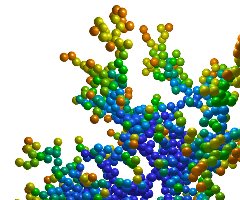
WebGL DLA Explorer
- when
- Nov 2011
Demonstration of Diffusion-Limited Aggregates in 3 dimensions using WebGL. DLAs were the subject of previous work as an undergraduate in which I co-authored a paper on the computational complexity of building them on massively parallel computers.
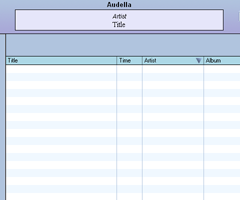
Audella
- when
- June - October 2007
Windows application that fingerprints music files for the purpose of correcting meta information and automatically organizing music on the client computer. Works with the a server to track submitted fingerprints and meta information and to determine which labels are correct and which are erroneous.
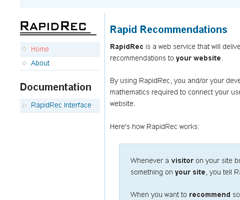
Rapid Recommendations
- what
- Founder
- when
- September 2008 - April 2009
Web start-up that was to serve quality content recommendations as a REST XML web service. Built a P2P-replicated key-key-value store using Python to manage ratings data efficiently.
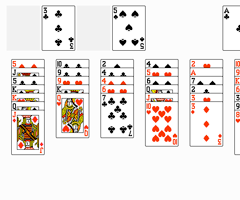
FreeCell
- when
- August 2009
Built a web-based version of my earlier C# Better FreeCell application. 14 kB of Javascript provides a full-featured FreeCell game plus a depth-first-search solver that seamlessly works in the background to detect deadlock/loss conditions.
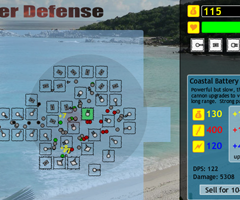
River Defense
- when
- October 2008
River Defense is a Flash-based strategy game fashioned after Desktop Tower Defense. It expands upon that theme by using a dynamic physics model and by automatically recording and playing back other players' games. Over 650,000 games have been played and more than seven years' worth of gameplay have been recorded as of September 2009.
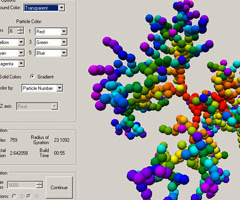
DLA Explorer
- when
- October 2006
Built a Windows application to visualize Diffusion-Limited Aggregates (DLAs) in both two and three dimensions. DLAs were the subject of previous work as an undergraduate in which I co-authored a paper on the computational complexity of building them on massively parallel computers.
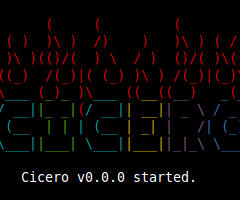
Cicero
- what
- Creator
- when
- September 2011 - April 2012
Cicero is a new kind of webserver written in Node.JS that serves git repos instead of just folders and files; it is built to support cutting edge collaborative development and horizontal scaling from the ground up.

Threat Stack
- what
- UI Developer
- when
- Sept 2014 - May 2015
Built a bunch of things with Node and TBone+React.

AppNeta
- what
- Software Engineer
- when
- June 2012 - Sept 2014
Built a bunch of things (from Hadoop to UI) for Application Performance Management startup AppNeta.

Homesite Insurance
- what
- Platform Owner / Web Developer
- when
- June 2010 - May 2012
Enhanced Homesite's consumer-facing sales and servicing applications, using all sorts of nifty new and old web technologies on a .NET stack. Introduced concepts and technologies including responsive & mobile-first design, test automation with Selenium, TDD, continuous integration, Less CSS, client-side MVC w/Backbone.js and Mustache, and gumdrop buttons.

InQuest Technologies
- what
- Software Engineer
- when
- October 2008 - May 2010
Delivered enterprise-class web application using C#, ASP.NET, SQL Server, jQuery/JS, and HTML/CSS. Assisted in modernizing software engineering practices during the buildout of a small team. Led the charge to bring the application to life and improve performance as an in-house expert on Javascript.
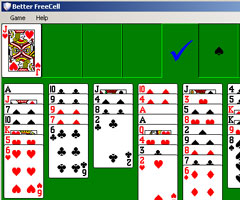
FreeCell
- when
- November 2006
Built an enhanced clone of the popular FreeCell title in C#. Aside from a number of subtle changes to the flow of the game (without changing the rules), the major addition was a system that continuously checks the game for deadlocking. This fixed a major flaw in the Microsoft version where players often reached a point where the game could not progress toward either a win or loss condition.

PS3/CellBE Image Processing
- when
- May - July 2008
Created a Windows C# application and a server running on a Playstation 3 (running Linux) that interface to analyze video images in real-time. Other CellBE work includes some later work processing Netflix Prize data on a pair of PS3s (with an x86 master node) using a proprietary high-performance clustering and task distribution framework.

Amie Street
- what
- Software Engineer, Recommendations Expert
- when
- February - May 2008
Worked with Internet startup music vendor Amie Street (amiestreet.com) to develop a prototype content recommendation system for their large and diverse collection of music.

TBone
- what
- Creator
- when
- October 2012 - May 2015
TBone is a reactive / data-flow-oriented programming library with a live templating system built atop it.
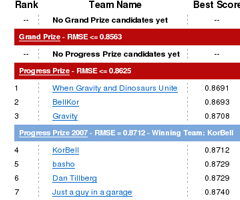
Netflix Prize
- what
- Solo Contestant
- when
- October 2007 - February 2008
Developed a comprehensive collaborative filtering system to predict user ratings of movies based on a provided rating history. Predicted ratings 8.3% better than Netflix's baseline system. Ranked fifth place overall by February 2008 in the million-dollar contest to reach 10%.

CSS3 3D Text Demo
- when
- April 2011
Proof-of-concept demonstration of using CSS3 2D transformation matrices to mimic 3D text display. Someday I will make my blog render in this format.
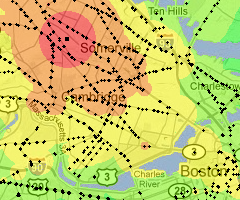
MBTA Transit Times
- when
- May - June 2010
Used service data provided publicly by the MBTA to produce a heat map showing typical travel times from a selected starting location to anywhere else in the Boston area.


















